The Acorn Woodpecker Is A Glossy Black Bird With A Streaked Chest, A Red Cap - And A Charming Personality
The acorn woodpecker’s head, back, wings, and tail are brownish-black, while its throat, belly, and forehead are white. This color scheme emphasizes its red cap even more.
The bird’s eyes are white and have a small patch of green feathers on the back. You might think that so many colors could be a bit overwhelming, but they are well arranged, giving this bird a sort of gentlemanly appearance (clownish-gentlemanly, to be exact).
The females have a very similar color pattern, with the main difference being a black area between the forehead and the cap. The acorn woodpecker lives in the foothills of Oregon, California, and the southwestern United States, extending south through Central America to Colombia.
It prefers oak woods, groves, mixed forests, oak-pine canyons, and foothills. In fact, you can barely see it far from oaks.
The acorn woodpecker got its name for a reason: it depends heavily on acorns for food.
Acorns are so important to this bird that it even nests in the fall to take advantage of the abundant supply of its favorite food. This is quite uncommon for birds.
This bird is known for its habit of hoarding acorns; it drills tiny holes in a dead snag, then harvests acorns in the fall and stores them in these holes to be eaten during winter. Such a "granary tree" may be used for generations and can be riddled with up to 50,000 holes.
The acorn woodpecker lives in the foothills of Oregon, California, and the southwestern United States, extending south through Central America to Colombia.
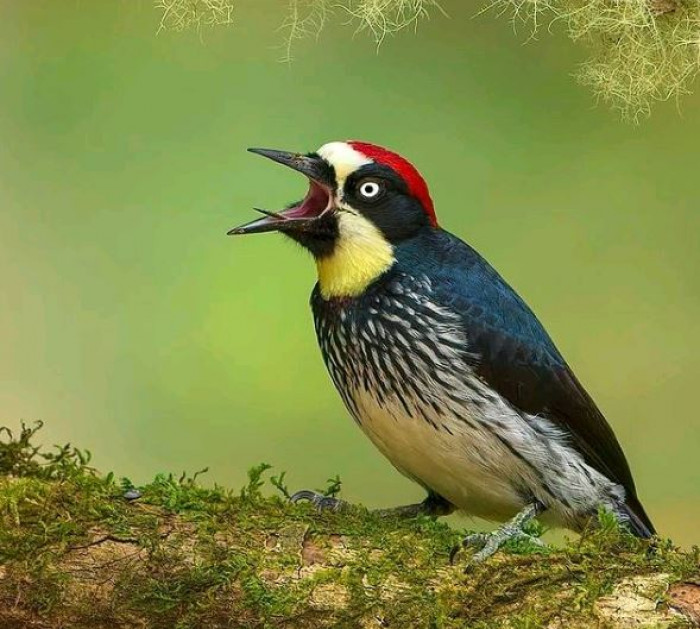
It prefers oak woods, groves, mixed forests, oak-pine canyons, and foothills...

Acorn woodpeckers also eat insects, sap, and fruit. They can be seen sallying from tree limbs to catch insects, eating fruit and seeds, and drilling holes to drink sap.
This occurs in two ways: coalitions and family groups. The saying "it takes a whole village to raise a child" proves true here.
Adult offspring regularly stay in their parents’ nests and help raise the next generation. Breeding coalitions comprise up to three joint-nesting females and up to seven co-breeding males.
Most nests, however, consist of only three males and two females. The group can have up to ten offspring helpers.
The breeding coalitions are usually closely related—the males are brothers, and the females are sisters. However, despite this fact, inbreeding is rare; co-nesters of the opposite sex are never related.
The acorn woodpecker got its name for a reason
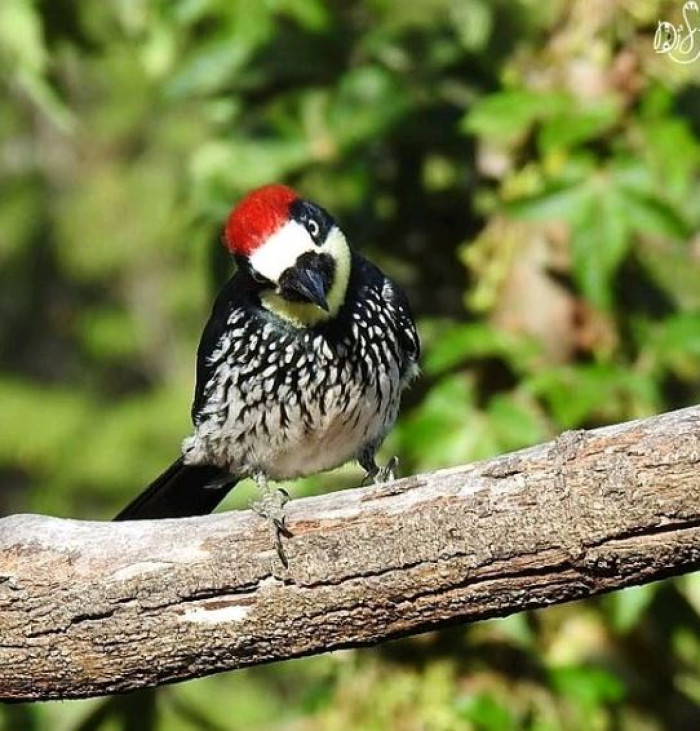
It depends heavily on acorns for food.
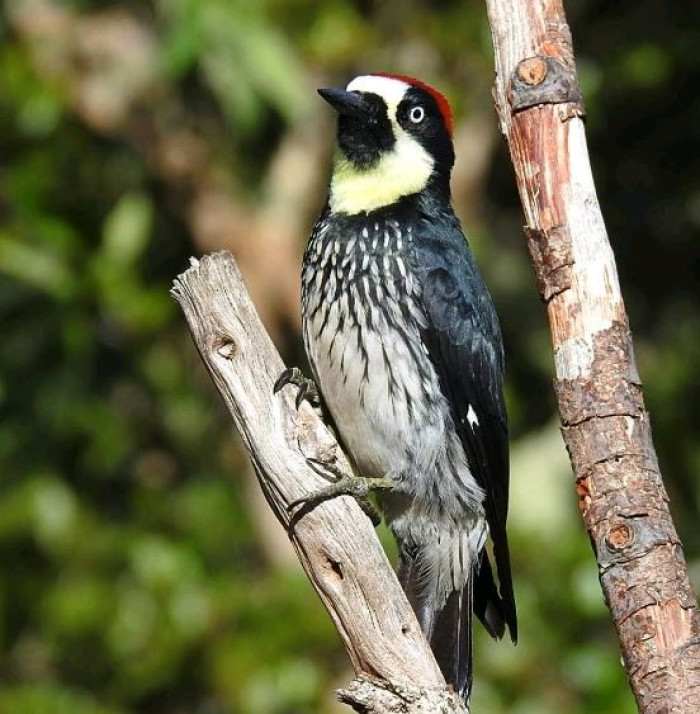
This bird even nests in the fall to take advantage of the abundant supply of acorns.
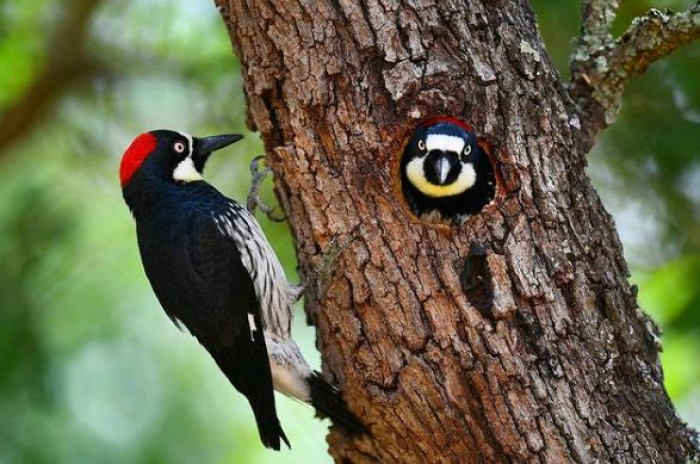
This bird is known for its habit of hoarding acorns.

The acorn woodpecker’s singing resembles human laughter.
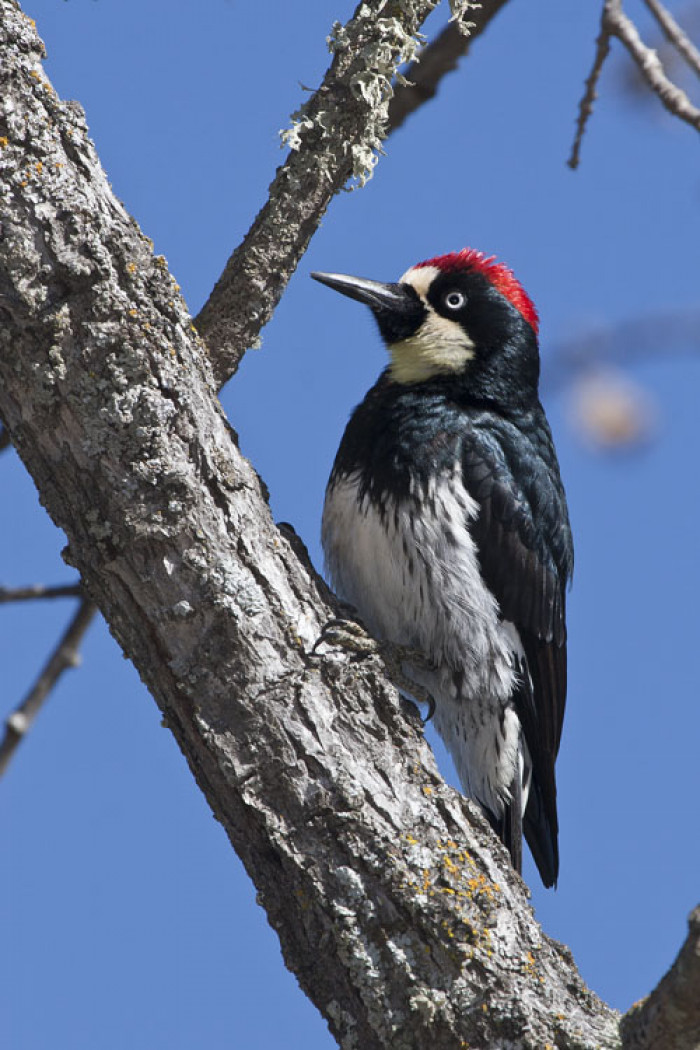
Adult offspring regularly stay in their parents’ nests and help raise the next generation.
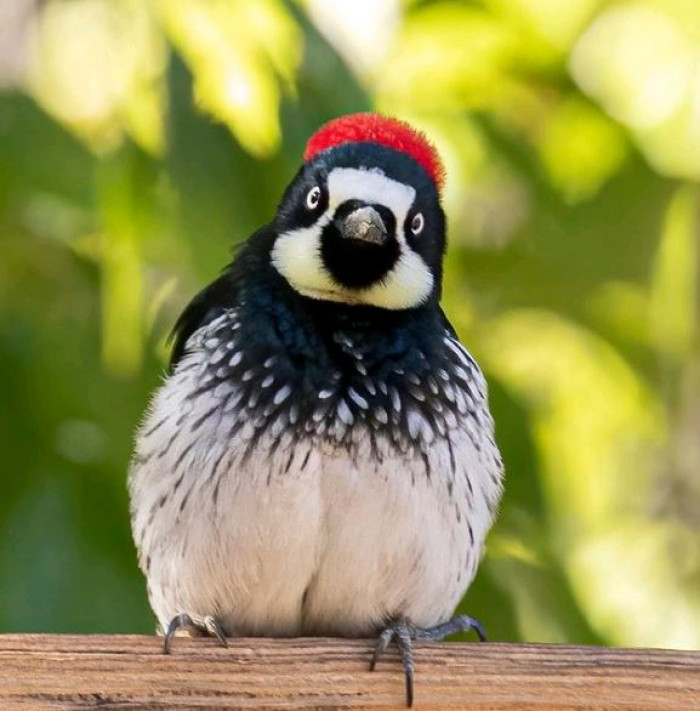
Watch and hear them sing:
Besides having charming looks, the acorn woodpecker is also a barrel of fun. The sounds it produces can sometimes resemble human laughter.
Very often, you can even hear them say, "wake up, wake up," or at least something that sounds like it. These birds have a stable population and are not endangered.



